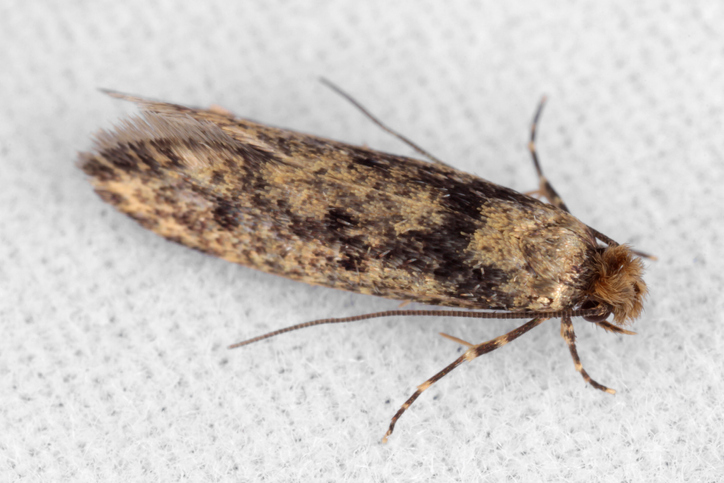FIND YOUR LOCAL
ARROW SERVICE CENTER
Tineola bisselliella
Only two species of moths are considered textile-eating: the webbing clothes moth and the case-making clothes moth. So clean your closets, check your garments, and let’s learn more about these pesky pests.

| Color | Grayish-brown |
| Legs | 6 |
| Shape | |
| Size | 5 to 8 mm (1/4 inch) |
| Antennae | True |
Often mistaken for grain moths, clothes moths have grayish-brown or beige wings almost as narrow as their body. Their larvae are white caterpillars less than ½ inch long.
Clothes moths only eat natural materials, such as wool, fur, silk, feather, and leather, and cannot digest synthetic fabrics like polyester. In nature, they feed on carcasses or nesting material.
If you think you have clothes moths, look for small holes in your clothing and any moths or moth remains in your closet or home. You can also search for live larvae or casings on or near clothes.
To remove any moths or larvae, wash your garments for 30 minutes in water at least 120°F. For clothing that cannot be washed, vigorous brushing, high heat, and freezing temperatures can also kill any larvae and eggs attached.
To prevent clothes moths, store your clothing in plastic storage bins or compressions bags, or keep them in a well ventilated wardrobe, as moths prefer warm, damp conditions. You can also use natural moth repellent like cedar wood or lavender.
If your clothes moth infestation continues, call Arrow Exterminators for a professional pest control plan.
After you submit the information below, a trained professional in your area will get in touch within 1-2 business days to set up a date & time that is convenient for you.